Exploring Smartphone Lens Attachments for Photography
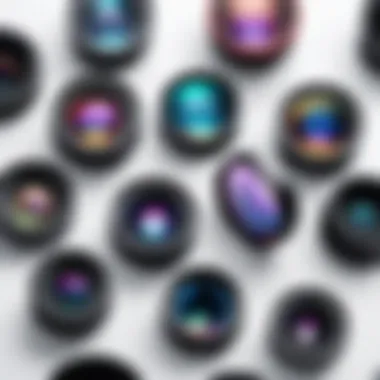
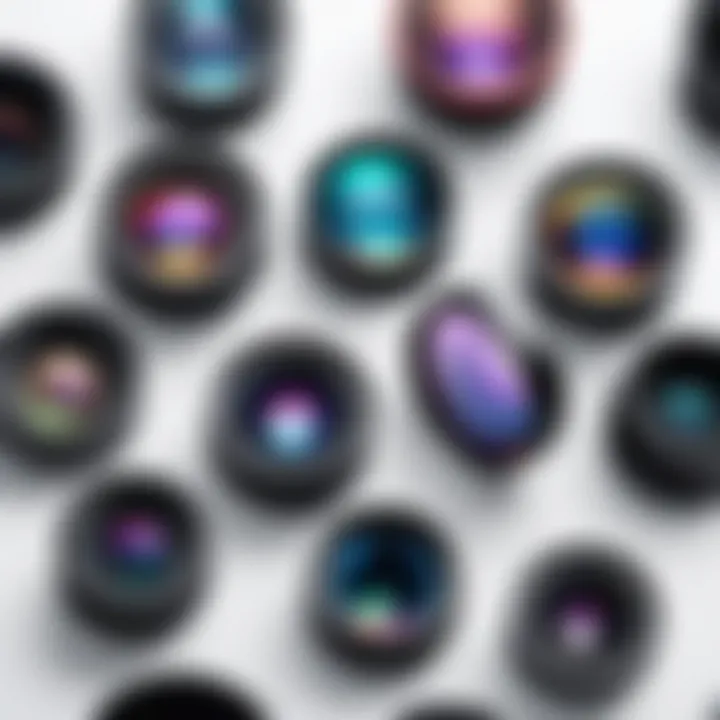
Intro
Smartphone photography has revolutionized how we capture moments and record life. As technology becomes more accessible, it pushes users to seek higher quality in their images. This need gives lens attachments an important role. By enhancing the capabilities of smartphone cameras, users can achieve professional-looking effects without carrying bulky equipment. The discussion here examines the various types of smartphone lens attachments available, their unique features, benefits, and limitations. Understanding these elements can empower tech enthusiasts and professionals alike to maximize their mobile photography experience.
Features Overview
Key Specifications
Smartphone lens attachments come in different designs and types, each tailored to specific photography needs. Below are some common specifications that characterize these devices:
- Focal Length: This varies depending on the lens type; wide-angle lenses usually have a shorter focal length for capturing more in a single shot.
- Magnification: Different lenses have different magnification levels which influence how close or distant subjects appear.
- Compatibility: Many attachments are designed to fit specific smartphone models or have universal mounts that adapt to various devices.
- Material Quality: The quality of the optical glass and the build material of the lens can affect image clarity and durability.
Unique Selling Points
Smartphone lens attachments appeal to a wide range of users for various reasons:
- Portability: They are compact and lightweight, making them easy to carry and use on the go.
- Affordability: Compared to traditional camera lenses, smartphone attachments typically come at a lower price point, making them accessible to many.
- Creativity: These accessories allow users to experiment with perspectives and creative effects that are hard to achieve with standard smartphone lenses.
- Ease of Use: Most lens attachments are user-friendly, enabling even beginners to enhance their photography skills with minimal effort.
"The right lens can transform your smartphone camera from ordinary to extraordinary, empowering users to capture stunning images effortlessly."
Performance Analysis
Benchmarking Results
In real-world scenarios, the effectiveness of smartphone lens attachments can vary. However, it is possible to analyze their performance based on specific experiences. While lens quality will impact results, factors to consider include:
- Image Distortion: Wide-angle lenses can sometimes introduce distortion at the edges, impacting overall image quality.
- Low Light Performance: Not all attachments perform well in low light, which can lead to grainy images.
- Focus Ranges: Different lenses have unique focus properties, with macro lenses excelling in close-up shots.
Real-world Scenarios
Real-world uses of smartphone lens attachments guide their performance outcomes. Here are some examples:
- Nature Photography: The use of a telephoto lens allows for capturing distant wildlife without intruding on their space.
- Vlogging: Wide-angle lenses are popular among content creators for personal recordings, ensuring more backgrounds in a shot.
- Social Media Posts: Creative use of macro lenses can help highlight details, making posts more visually appealing and engaging.
Intro to Smartphone Lens Attachments
Smartphone lens attachments have gained notable traction in recent years. This section highlights their significance in mobile photography and their impact on how users capture their visual experiences. Understanding smartphone lens attachments helps enthusiasts and professionals alike enhance their photography practices. Such attachments allow flexibility and creativity that smartphones alone cannot easily provide.
Definition and Purpose
Smartphone lens attachments are additional lenses that can be mounted onto a smartphone camera. They enhance the photography capabilities of these devices, enabling users to take a variety of shots that range from close-ups to expansive landscapes. The primary purpose of these lenses is to alter the focal length and field of view of the smartphone's integrated camera. This allows users to achieve specific photographic effects or capture images in conditions that would otherwise be challenging with the standard lens.
A wide-angle attachment, for instance, expands the field of view, making it easier to capture a larger scene. Conversely, a macro lens focuses on minute details. Such versatility is crucial for photographers who want to explore different aspects of their craft without being limited by their device’s inherent camera specifications. The use of these attachments can significantly elevate the quality of images shared online, particularly in a social media-driven society.
Historical Context
The evolution of smartphone lens attachments reflects broader changes within mobile technology. As smartphones became prevalent in daily life, users began to recognize the limitations of built-in camera lenses. The first smartphone camera was introduced in 2000, but it wasn't until smartphones evolved into multifunctional devices that camera quality improved significantly.
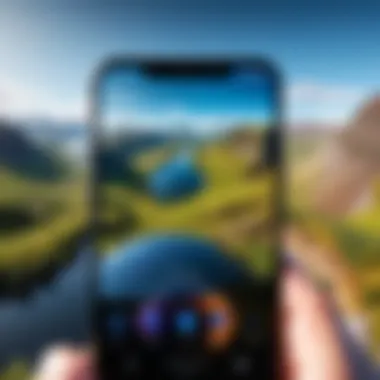
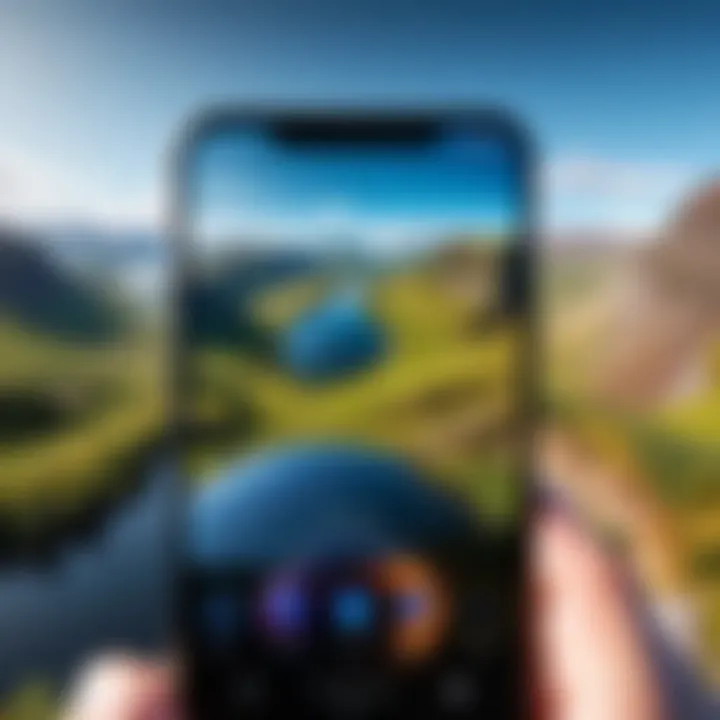
In the early 2010s, third-party accessory makers began to design lenses that could be easily attached to smartphones. Brands like Olloclip and Moment popularized these accessories. They recognized the demand for better photography solutions and catered to a growing segment of users who wanted to use smartphones for serious photography.
Today, with the rapid advancement of smartphone technology and optics, users expect not just convenience but also high-quality imagery. As a result, smartphone lens attachments have transitioned from niche products to essential tools for anyone looking to enhance their photography skills. Future developments in mobile technology may further expand the possibilities of these lens attachments, making them more accessible and versatile for every photographer.
Types of Smartphone Lens Attachments
Understanding the different types of smartphone lens attachments is crucial for anyone looking to enhance their mobile photography skills. Each type serves specific functions and offers unique benefits. By comprehending the distinct characteristics of these lens attachments, users can select the appropriate one for their intended photography needs. Furthermore, these attachments can transform an ordinary smartphone camera into a versatile imaging tool capable of capturing a wide variety of scenes and subjects.
Wide-angle Lenses
Wide-angle lenses are designed to expand the field of view, allowing photographers to capture more in a single frame. This is particularly beneficial in landscape photography or when shooting in tight spaces. The main advantage of using a wide-angle lens is its ability to include more elements, thus creating a more immersive and dynamic composition. However, users must be cautious of distortion that can occur at the edges of the image. High-quality wide-angle lenses typically minimize this distortion, leading to sharper and more accurate images.
Macro Lenses
Macro lenses enable photographers to capture extreme close-ups of small subjects, such as flowers or insects. These lenses excel in revealing intricate details that are often missed by the naked eye. The benefit of using a macro lens lies in its capability to photograph subjects at a very short distance while maintaining clarity and focus. However, proper lighting becomes essential when using macro lenses, as shadows can easily obscure fine details in close-up images. Good macro lenses often come with features like built-in lights to assist in achieving the best results.
Telephoto Lenses
Telephoto lenses are crafted for capturing distant subjects, which is ideal for wildlife or sports photography. They allow for significant zooming capabilities without sacrificing detail. The primary benefit of telephoto lenses is the ability to isolate subjects from their backgrounds and create depth in images. However, it is critical to consider that using telephoto lenses may require a steady hand or a tripod to prevent blurriness due to shaking, especially at longer focal lengths. Overall, the richness of detail captured with telephoto lenses is vital for impactful photography.
Fisheye Lenses
Fisheye lenses are unique in their extreme wide-angle design, creating a spherical effect that can distort images significantly. This type of lens is often used for artistic photography, where the goal is to achieve a creative and exaggerated perspective. The main appeal of fisheye lenses lies in their ability to produce striking and unusual visual outcomes, often resulting in a very engaging composition. However, their specialized nature means they may not be suitable for all types of photography and can lead to limitations in photo editing.
Anamorphic Lenses
Anamorphic lenses are engineered to achieve a cinematic look with their distinctive oval bokeh and lens flares. These lenses compress the image horizontally, allowing for a wider aspect ratio in video and photography. The greatest advantage of using anamorphic lenses is the dramatic and visually captivating images they produce, appealing primarily to videographers and filmmakers. Yet, they require careful handling and expertise to fully utilize their capabilities, especially when it comes to post-production adjustments.
Technical Considerations
Understanding technical considerations when using smartphone lens attachments is crucial for achieving optimal photography results. This section discusses important elements that affect performance, including compatibility with devices, impact on image quality, and light considerations. Each of these factors plays a significant role in how effectively a lens attachment enhances the smartphone camera.
Compatibility with Different Devices
The compatibility of smartphone lens attachments with various devices is a core consideration. Not all lenses are designed to fit every type of smartphone. The design of the lens mount, as well as the camera's location, determines whether a lens can be used effectively.
Many brands create lens attachments that are universal, meaning they can fit a range of devices. For example, lens attachments from brands like Moment or Olloclip often include adapters or clips that allow adjustment for various smartphone models. Before purchasing a lens, it's advisable to check its specifications. Failure to do this can lead to frustration and dissatisfaction due to poor fit or functionality.
Impact on Image Quality
Lenses can significantly affect image quality. When selecting a lens attachment, it's essential to consider the glass quality. Higher-quality lenses generally produce sharper images with better color accuracy. Many lower-end options may introduce distortion or vignetting. It is crucial to look for lenses that maintain clarity and provide minimal distortion, as these factors can compromise the photography experience.
It's also worth noting that camera specifications and lens characteristics interact closely. Smartphone cameras vary in sensor size and resolution, influencing how well they capture images using lens attachments. A good practice is to consult online reviews or case studies that provide insights into specific combinations of smartphones and lenses, ensuring an informed decision.
Light Considerations
Lighting is a vital aspect that impacts photography. When using lens attachments, understanding light behavior becomes even more important. Depending on the lens type, they can alter how light enters the camera. For instance, a wide-angle lens might cause light to spread across a broader area, affecting exposure settings and depth of field.
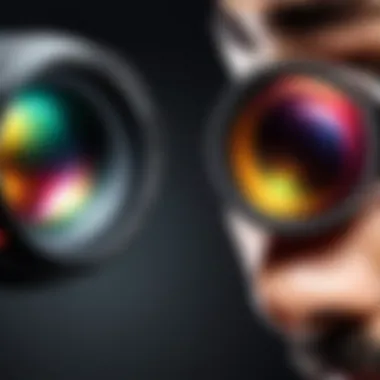
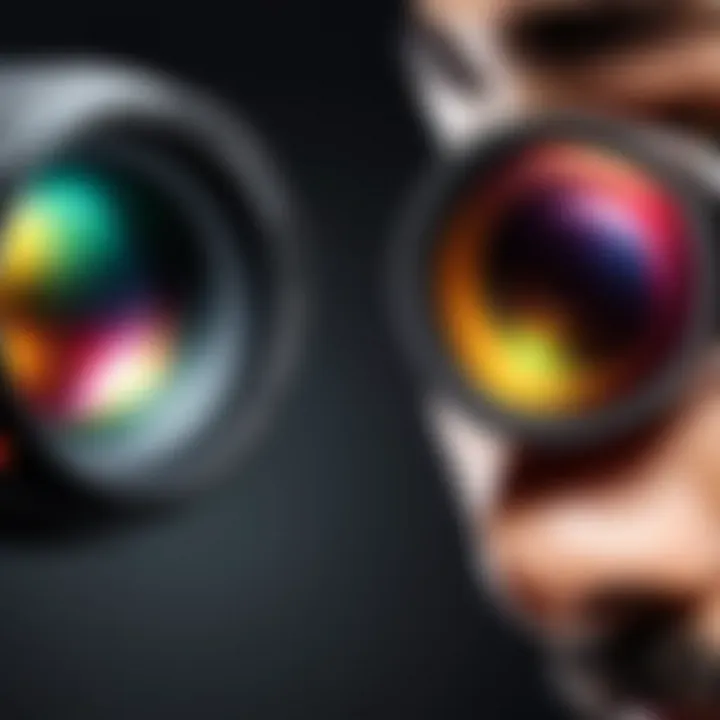
When working with lens attachments, one should consider the high-dimensionality of light falling onto a sensor. Lens attachments can sometimes result in loss of light, affecting the overall image brightness and clarity. Users may need to adjust their exposure settings, ISO levels, or even use external light sources in low-light conditions.
Applications in Photography
Understanding the applications of smartphone lens attachments is essential for anyone looking to enhance their photography skills. These attachments provide distinct advantages in various settings, allowing users to capture images that would not be possible with standard smartphone cameras alone. With an increasing number of individuals relying on smartphones for photography, the importance of these tools cannot be overstated. By enhancing the versatility and quality of mobile photography, lens attachments serve as valuable assets for both professionals and hobbyists alike.
Professional Use Cases
In professional photography, smartphone lens attachments can help achieve high-quality results in specific situations. Photographers often use wide-angle and telephoto lenses for architectural and portrait photography, respectively. For instance, a real estate photographer may deploy a wide-angle lens to capture a more immersive view of interior spaces, which can significantly affect buyer interest. On the other hand, weddings and events benefit from telephoto lenses that allow capturing subjects from a distance without losing clarity.
"Smartphone lens attachments can transform mobile photography into a professional-grade tool."
- Wide-angle lenses: These are highly beneficial in capturing vast landscapes or cramped indoor settings.
- Macro lenses: Professional photographers rely on these for close-up shots of nature, products or intricate details in fashion.
- Telephoto lenses: Perfect for portraits or capturing distant subjects, they maintain sharpness without distortion.
The ability to change perspectives through the addition of lens attachments can help professionals present their work in a more engaging manner, thus enhancing their portfolios.
Creative Projects
For enthusiasts delving into creative projects, smartphone lens attachments open a world of artistic possibilities. They allow for experimentation and exploration of new styles. Creative projects, such as personal or community photography exhibitions, can utilize various lens types to produce diverse images that engage viewers.
- Fisheye lenses create fun, playful images that can provoke thought and discussion.
- Anamorphic lenses are increasingly popular in filmmaking, enabling unique cinematic visuals that can transform a simple shot into an extraordinary one.
The flexibility afforded by these lenses encourages artists to push boundaries and discover their unique style. Taking on these projects can also build technical skills and broaden one's understanding of composition and lighting.
Social Media and Content Creation
In the age of social media, capturing high-quality images quickly and efficiently is crucial for content creators. Smartphone lens attachments have become integral to content strategies across platforms like Instagram, TikTok, and YouTube. Creators often employ different lenses to heighten their storytelling capability and visually engage audiences.
With the instantaneous nature of social media, here are a few considerations for content creators:
- Engagement: Unique and striking images tend to garner more likes and shares.
- Consistency: Utilizing lens attachments helps maintain a more polished look across content.
- Versatility: Different projects may require different perspectives, making lens attachments a necessity for varied content.
Overall, smartphone lens attachments are valuable resources for all forms of photography, be it professional work, personal projects, or social media content creation. They expand the capabilities of smartphones and enable users to capture images that reflect their artistic vision.
Market Trends and Innovations
In the realm of smartphone lens attachments, keeping abreast of market trends and innovations is essential. This understanding not only helps in making informed buying decisions, but it also augments the user experience in mobile photography. The industry shows rapid progression, influenced by technology evolution, consumer preferences, and competitive dynamics. Spotting these trends can lead to enhancing your photography with the right gear at the perfect time.
Popular Brands and Products
When discussing popular brands, we must focus on a few leaders in the market. Companies like Moment, Olloclip, and Aukey have made a significant impact. The Moment lenses, for instance, are celebrated for their exceptional build quality and versatility, favored by both amateur and professional photographers alike.
- Moment - Renowned for premium, high-quality lenses, Moment offers various options such as wide-angle and macro lenses.
- Olloclip - Focused on multi-use lenses, Olloclip is well-regarded for convenience and compact design, suitable for travelers.
- Aukey - Known for affordability, Aukey provides a range of products that balance quality and price.
In addition to these popular brands, consumers often look to reviews and community forums to make choices. Platforms like reddit.com serve as helpful resources where users share their experiences. Engaging with such communities can significantly inform purchasing decisions.
Emerging Technologies
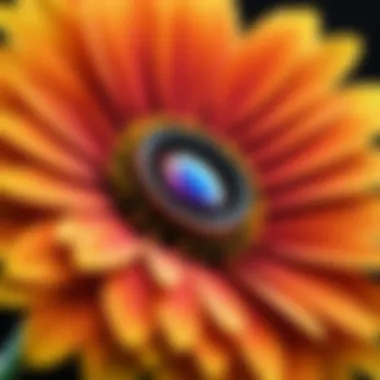
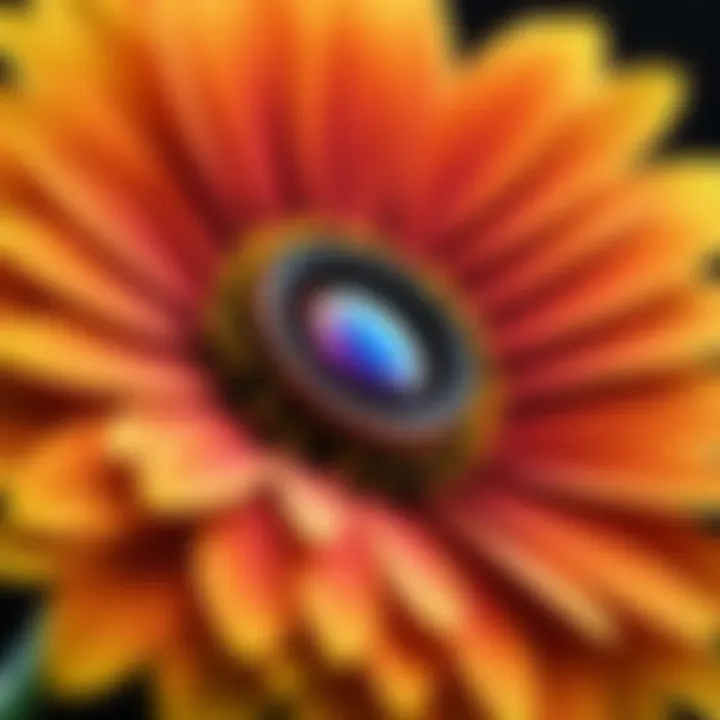
Emerging technology is reshaping the smartphone lens attachment landscape. Innovations focus on enhancing image quality and broadening functionality. For example, computational photography is becoming a game changer. Techniques like AI-driven enhancements or image stabilization can help improve the performance of lens attachments.
Furthermore, lens attachments integrating augmented reality also stand out. While still in early stages, these technologies offer impressive potential in enhancing user experience.
Here is a summary of some key trends:
- AI Integration - Increasing use of AI for image processing, resulting in clearer and more vibrant photos.
- AR Technology - Opportunities for interactive and engaging photography experiences.
- Sustainability - Brands focusing on eco-friendly materials and practices resonate with the environmentally conscious consumer.
The trajectory of smartphone lens attachments points towards a future where advancements enhance the mobile photography moment. As consumers stay abreast of these trends, they can better adapt and optimize their experiences.
User Experience and Reviews
User experience and reviews play a crucial role in understanding the efficacy of smartphone lens attachments. As mobile photography continues to grow, so does the need for users to share their experiences with these tools. Insights from actual users can guide potential buyers in making informed decisions, highlighting what works well and what does not. Moreover, user reviews can shed light on areas for improvement by manufacturers, ultimately pushing the market towards better products.
When considering smartphone lens attachments, users often weigh certain aspects such as ease of use, image quality, and compatibility with their specific devices. Reviews provide real-world evaluations of these features and help illuminate the value of certain lenses over others. Furthermore, they assist in understanding how these attachments hold up in different conditions, ranging from casual snapshots to complex photographic tasks.
Case Studies of Users
Case studies illustrate the wide-ranging applications and effects of smartphone lens attachments on users' photography. For instance, a photographer focusing on nature explored an inexpensive macro lens. His findings indicated a significant enhancement in capturing intricate details of flora and fauna. The user noted improved focus and sharpness, which traditional smartphone lenses often lack. This results not only improved aesthetics but also strengthened his overall portfolio.
Another case involved a travel blogger utilizing a wide-angle lens during various trips. The blogger reported that personal experiences improved significantly, as they could capture vast landscapes and architecture effortlessly. Most importantly, it allowed followers on social media to appreciate the beauty of the locations visited. Their feedback was overwhelmingly positive, affirming that gear can shape the narrative and emotional touch of shared images.
Comparison of Different Attachments
Comparing different smartphone lens attachments reveals distinct advantages and limitations inherent in each type. Consider the following comparisons:
- Wide-angle vs. Telephoto: Wide-angle lenses are ideal for capturing broader scenes, while telephoto lenses are better suited for distant subjects, producing a compressed view.
- Macro vs. Fisheye: Macro lenses excel in detail-oriented close-ups, making them perfect for small subjects. In contrast, fisheye lenses create a spherical distortion that can provide unique perspectives but at the cost of detail.
- Anamorphic vs. Standard Lenses: Anamorphic lenses are often preferred in cinematic photography due to their unique bokeh and lens flare effect. However, they come with a steeper learning curve and require more post-edit adjustments compared to standard lenses.
User reviews highlight these differences through personal experiences, offering a well-rounded perspective on the practicality and performance of each lens type. Each lens serves a specific purpose and style, making it critical for users to assess their needs carefully before making a purchase.
By engaging in a thorough examination of user experiences and feedback, both consumers and manufacturers can benefit. This practice can lead to enhanced product development that ultimately elevates the mobile photography experience.
The End and Future Outlook
The topic of smartphone lens attachments is not only noteworthy but increasingly vital in the world of mobile photography. As the technology of smartphones continues to advance, the capability of enhancing image quality and versatility through external accessories such as lens attachments becomes crucial. With photographers and everyday users alike embracing these tools, understanding their applications and benefits helps demystify the integration of advanced optics into mobile devices.
In the landscape of mobile photography, key elements arise when discussing the future. The enhancements provided by these lens attachments can elevate the art of capturing images. Better image quality, the ability to achieve different perspectives, and creative storytelling become more accessible. However, it is essential to consider the compatibility of these attachments with various smartphone models, which can influence user experience significantly.
The insights shared throughout this article provide a roadmap. By summarizing the key points and underscoring future developments, it becomes clearer how lens attachments can shape the future of mobile photography, making it a crucial field for those interested in technology and imaging solutions.
Summary of Key Points
- Smartphone lens attachments enhance photography beyond the phone's native lens capacity.
- Types of smartphone lenses include wide-angle, macro, telephoto, fisheye, and anamorphic varieties, each serving unique photography needs.
- Compatibility with devices can affect image quality and user satisfaction; understanding one's smartphone is fundamental before purchasing attachments.
- The market features various brands and innovative technologies, highlighting the competitive nature of the accessories space.
Highlighted trends indicate a growing interest in improvisation and creativity through mobile photography, urging both casual users and professionals to explore these enhancements further.
Future Developments in Mobile Photography
As technology evolves, future developments in mobile photography will likely focus on integration. Advanced algorithms and artificial intelligence can optimize how images are captured and processed. Lens attachments may become more sophisticated, with features such as automatic adjustments to light conditions and focus.
Users will demand more seamless experiences, prompting manufacturers to invest in creating attachments that easily interface with smartphone software. The prospects of smart lens attachments that can also enhance video recording or take advantage of augmented reality present exciting opportunities.
This horizon suggests a shift toward an integrated photography approach. Mobile devices will continue to merge traditional photography elements with innovative digital features, broadening artistic possibilities.
In summary, the exploration of smartphone lens attachments opens avenues for ongoing growth in mobile photography. It is essential for technology enthusiasts and industry professionals to remain informed and adaptable as the landscape unfolds.



